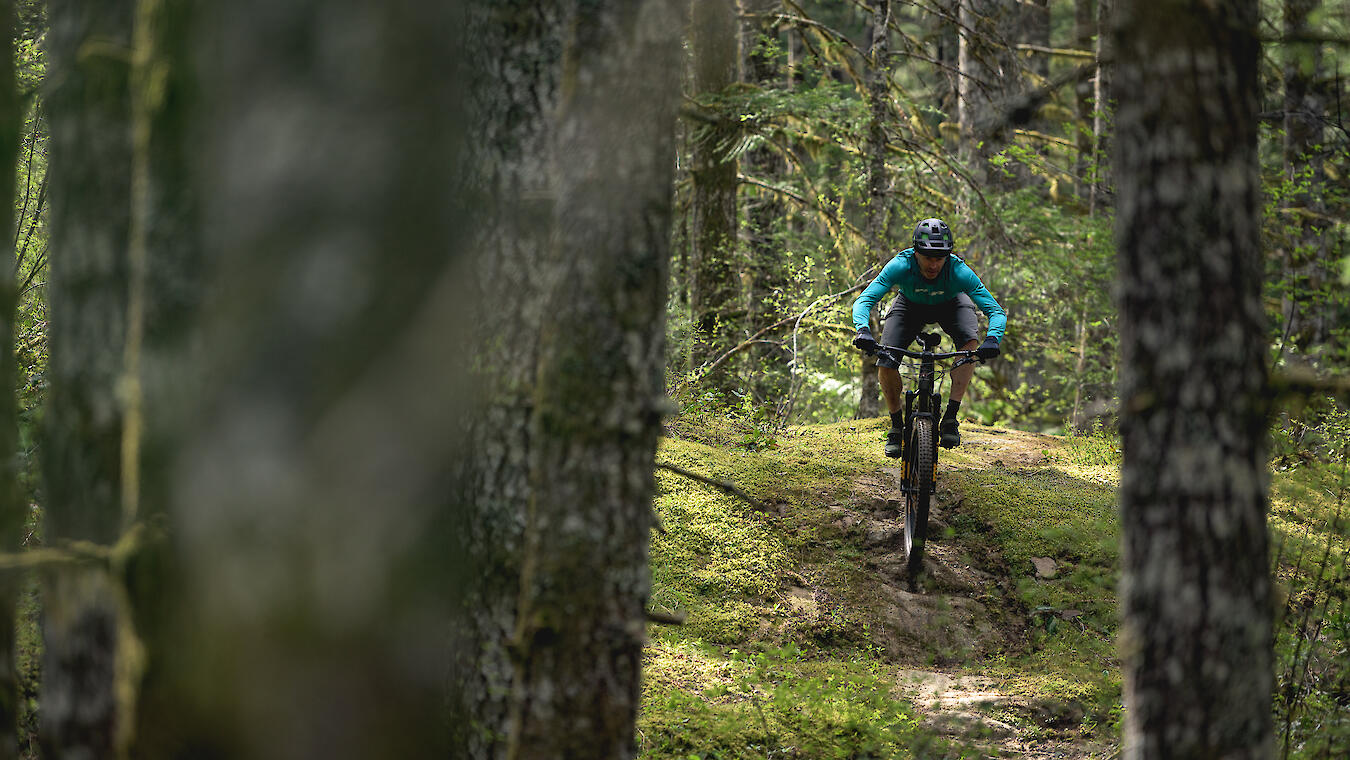
Trail renaissance in the river City
There’s been trail riding in Campbell River for decades. Now there’s mountain biking, too.
On Vancouver Island, mountain biking and logging often fit like rim to tire. Access roads are shuttle routes and climbing trails, skidder tracks become downhills, and paraphernalia lost in the woods is trail-name fodder.
That’s especially true in Campbell River, where logging and mountain biking are uniquely linked.
We start spotting the connection 30 seconds into a ride in the Snowden Demonstration Forest. On a cool spring morning, I meet Bryan Yells and Geoff Payne at the Lost Lake Parking lot, one of the trailheads in Snowden. Yells and Payne are part of the leadership of the River City Cycle Club and Snowden is Campbell River’s main trail network and the focus of the club's stewardship efforts.
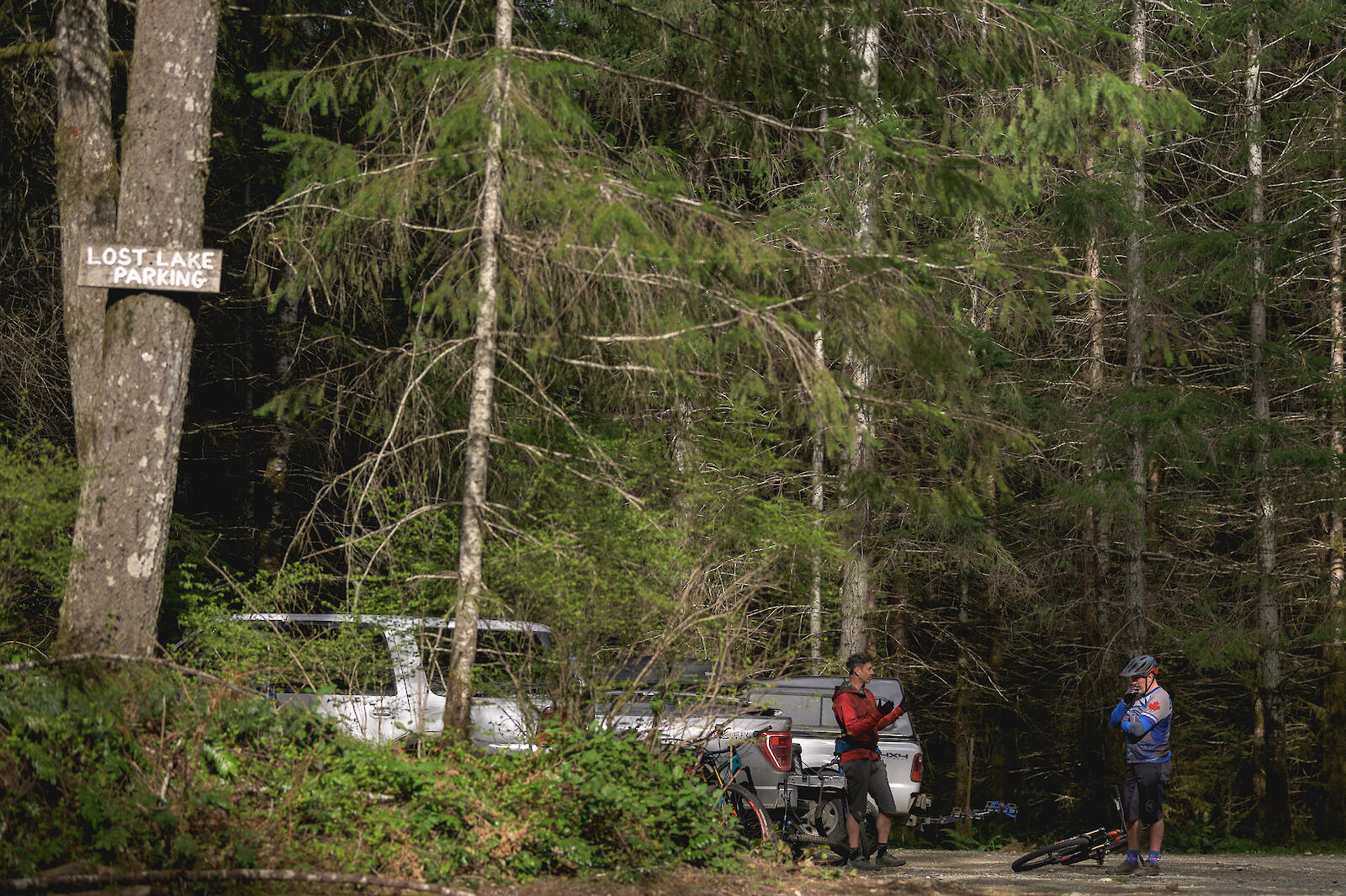
Shortly after leaving the parking lot, Yells is pointing out supports for a long-gone logging railway and, a few minutes later, a mossy trail that used to be a logging road. Soon, we’re zipping along through big trees on a smooth and perfectly angled trail surface.
“All the original mountain bike trails are old rail grades linked to bluffs by sections of single track,” Yells says, as we leave the rail grade and twist to the bottom of a gully once spanned by a bridge. The original builders did an amazing job of building the base trail network we are now tweaking.”
But instead of climbing back onto the rail grade, a brand new single track leads us onto a faint ridgeline above the lush undergrowth, bypassing around where the old trail turned into a river channel. This new section of dirt is part of an $757,000 trail renovation under way in Snowden. It includes trail re-alignments around eroded and muddy spots, improving the durability of the trails with upgraded surfacing materials especially rooty and rocky areas, adding switchbacks to climbs, widening a loop for aMTB accessibility and building a brand new trail, the networks second purpose built flowy downhill.
The modernization of the trail network aligns with demographic and economic forces in Campbell River and it’s all done in the context of the demonstration forest designation.
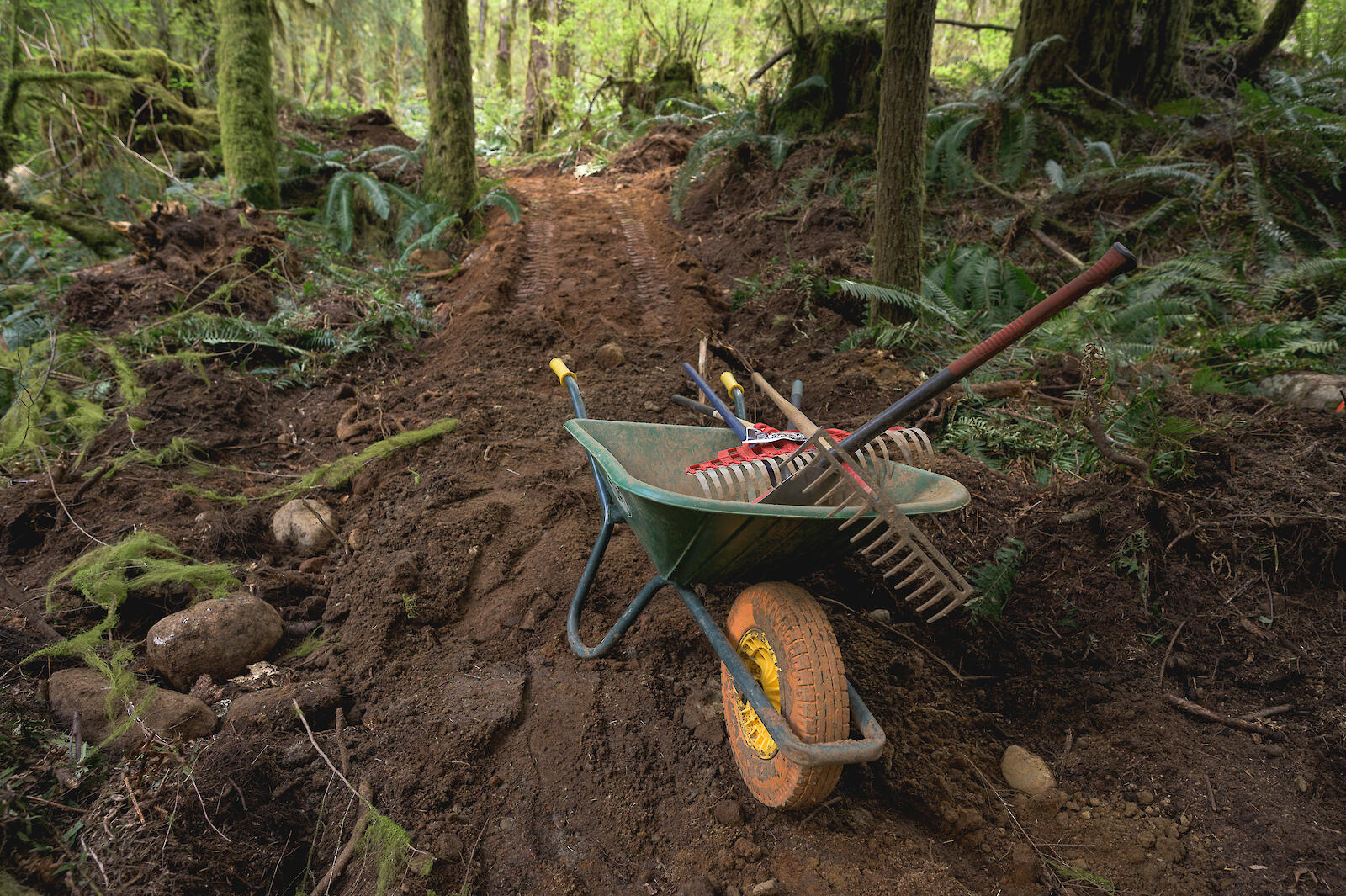
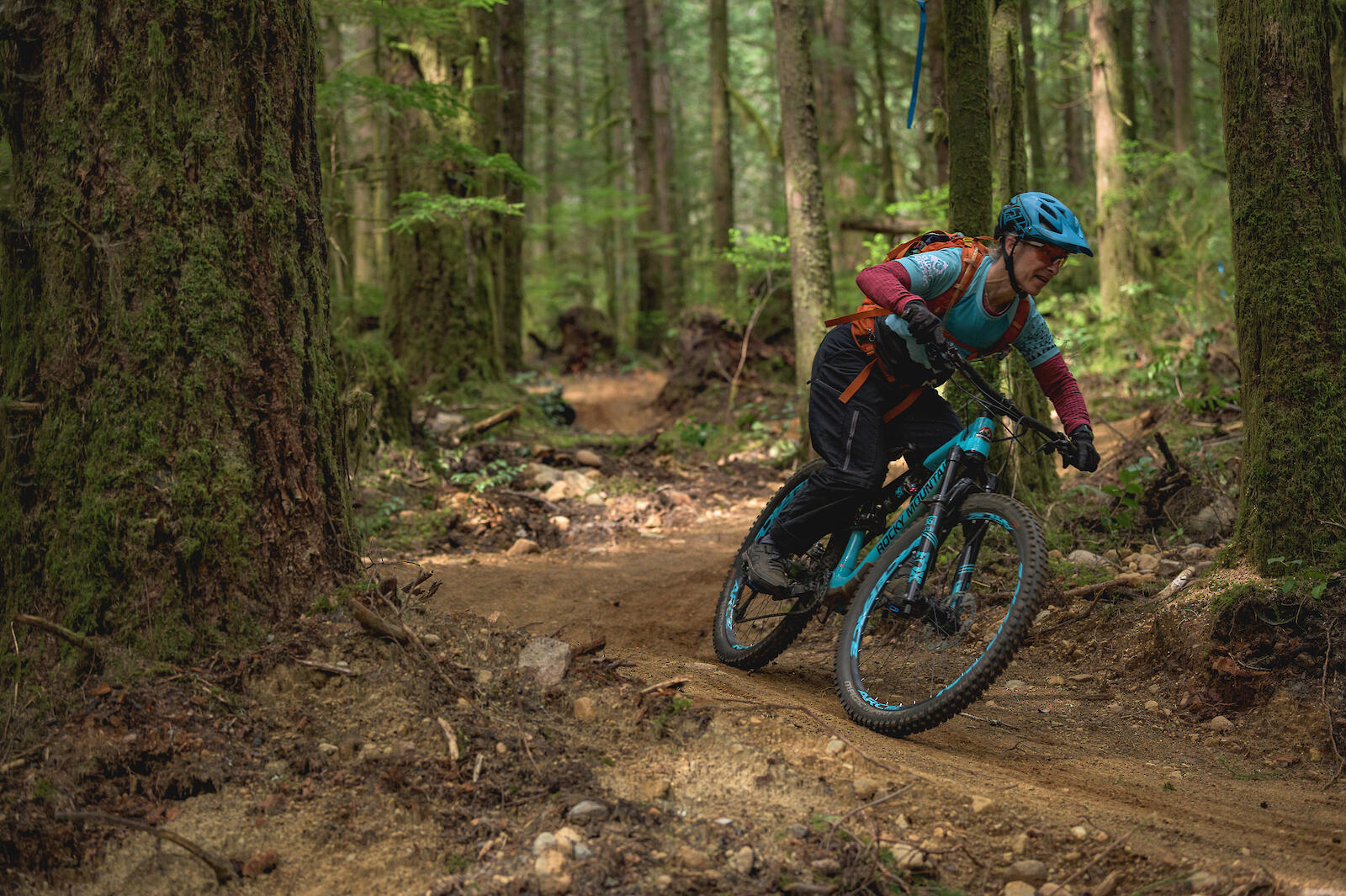
Recreation Sites and Trails BC manages the Snowden Trail network by working with other agencies, stakeholders, and First Nations to strike a balance among a range of interests and forest values: indigenous interests, timber, berry and mushroom picking, wildlife habitat, the water cycle, mountain biking and more. Because there are more than 100 kilometres of trails in Snowden, recreation is given more weight than it would in a forest in the middle of nowhere, says Graham Cameron, the district recreation officer with Recreation Sites and Trails BC.
“It doesn’t mean we don’t harvest the forest,” he says. “We weight the recreation value more and, when logging happens over a trail, we put it back.”
But mostly Snowden feels wild. Large areas are protected for wildlife, particularly elk winter range, and ecological habitat, like wetlands. Nearly half of Snowden is off limits to logging. It’s two hours into our ride before I see a clear cut. The rest of the time we ride through tall stands of Douglas fir and hemlock trees and the forest feels more untouched than almost anywhere else I’ve ridden.
Less obvious is that it is also a research lab. For decades silviculture scientists used the demonstration forest designation to experiment with different harvesting and reforestation techniques. Now they’re also testing different genetic strains for drought tolerance and pest resistance.
When we do see fresh logging or a new road, it’s short lived and often beneficial to recreation. The logging is done strategically to open sightlines, create openings for light and address forest health, like removing root rot or pest infected trees before they fall over a trail. They avoid logging near popular trails, but when they do, the club often uses the presence of heavy machinery as an opportunity to do trail work. It’s also a good opportunity to educate the public about the importance of logging from an economic and ecological perspective, says Cameron.
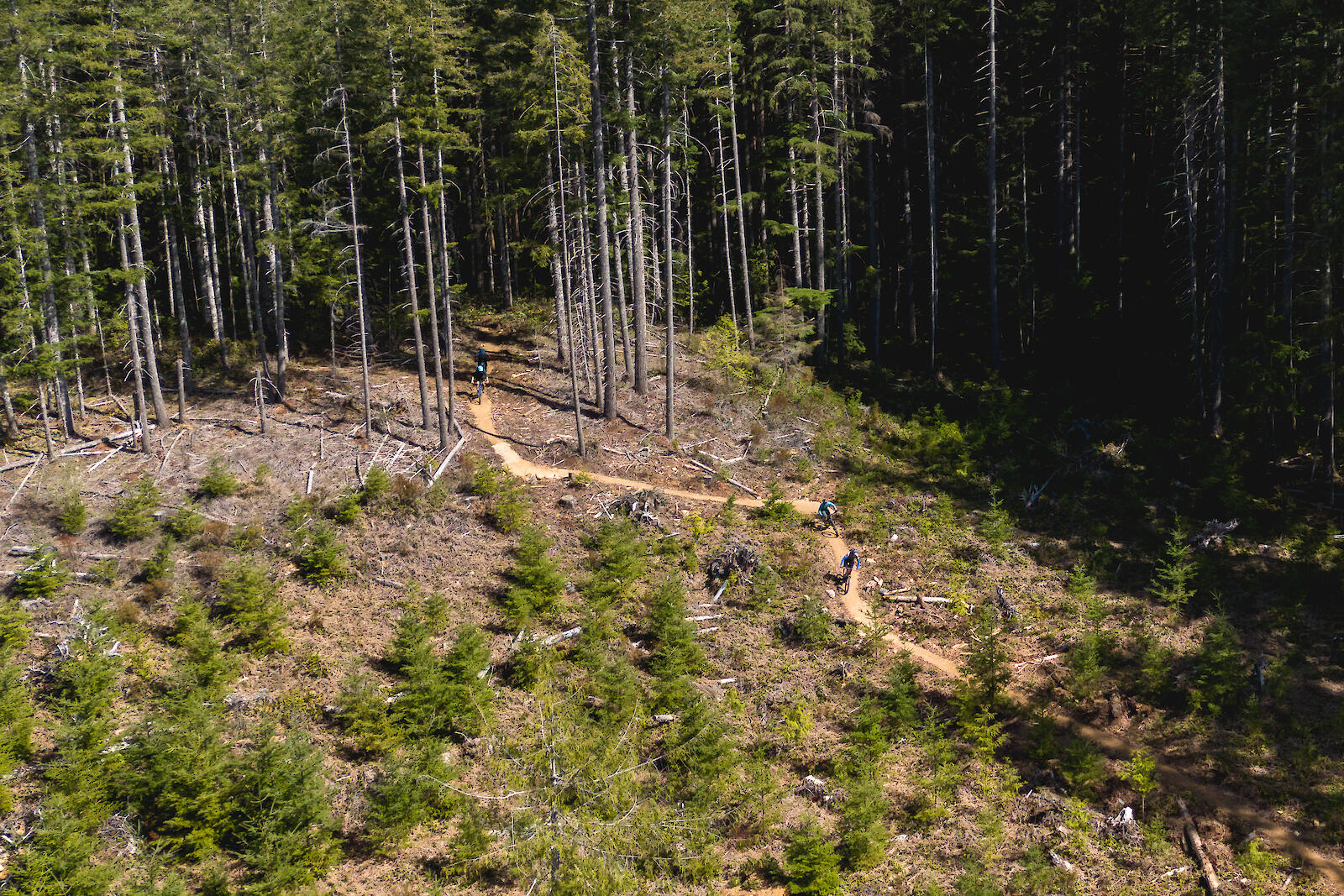
“When we removed fire from the landscape we removed the disturbance regime,” he explains. “We use forestry to mimic the natural system.”
When logging was one of the biggest employers in Campbell River, residents knew more about its value or at least didn’t question it. But many new people are moving to the city and the logging industry is slowly changing. As the public’s connection to the industry wanes, the value they see in the forest is changing. There’s now a Snowden Advisory Group made up of local resident and recreation stakeholders, including the bike club, that works with government agencies on planning in the forest.
“There’s a paradigm shift,” Cameron says. “Today the forest is seen as a health and wellness space, a place to disconnect and a place for recreation.”
The massive trail renovation in Snowden – at one point in the spring there were four crews at work simultaneously – is part of this shift. The funding for the work came from a tourism development grant. Mountain bike tourism is part of the city’s strategy to diversify beyond its resource heritage as a logging hub and salmon fishing capital. The trail work is designed to make the trails more accessible to a more diverse population of riders, continuing efforts that have been going on for a while.
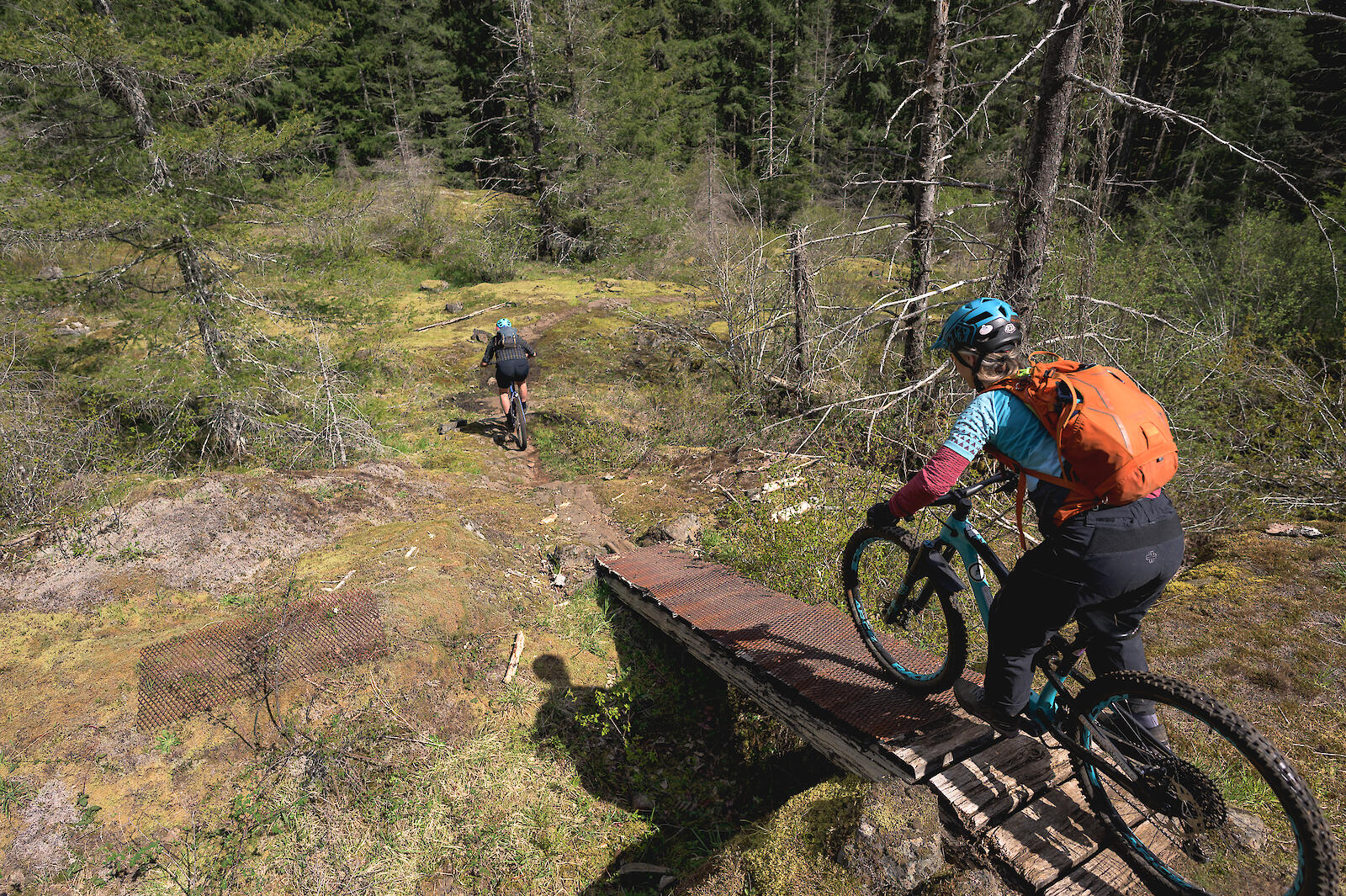
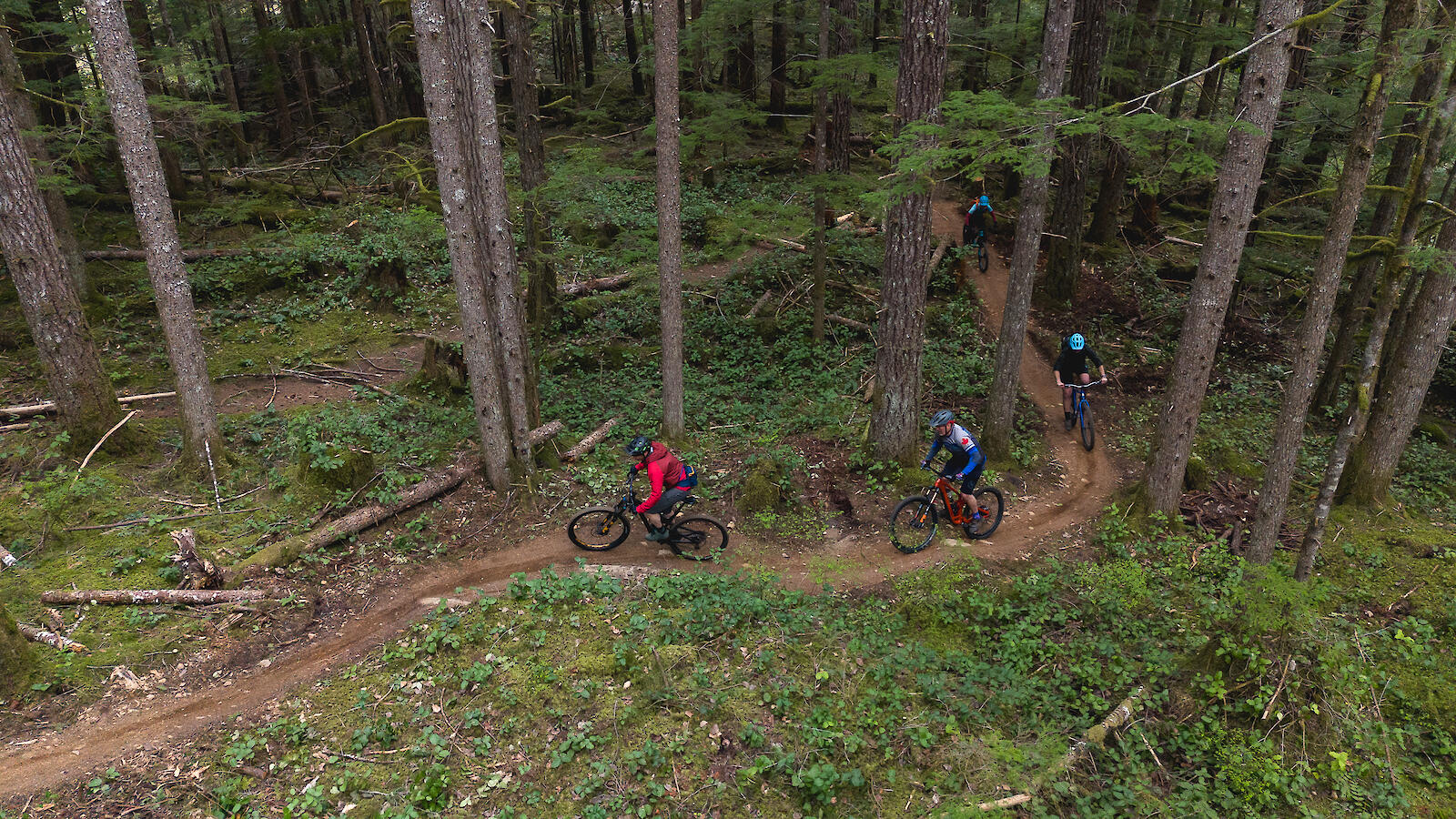
I had ridden Snowden years before. I remember it being so rooty, rocky, technical and twisty that I felt like I was riding uphill the whole time. Today it still has a cross-country character, but there are fast and swooping downhills, rolling grades and plenty of trailside jumps. Telling: after more than 20 kilometres on singletrack I’m not exhausted. The riding feels smoother and faster and far more approachable and diverse. There’s progression for all abilities.
“There will always be plenty of technical trails here,” Yells says. “Now we also have flow and easy cross country.”
The club’s not done with the renovation. They have more work planned in the fall. But already, “We’re already seeing a lot more families and a wider diversity of riders out,” Yells says.
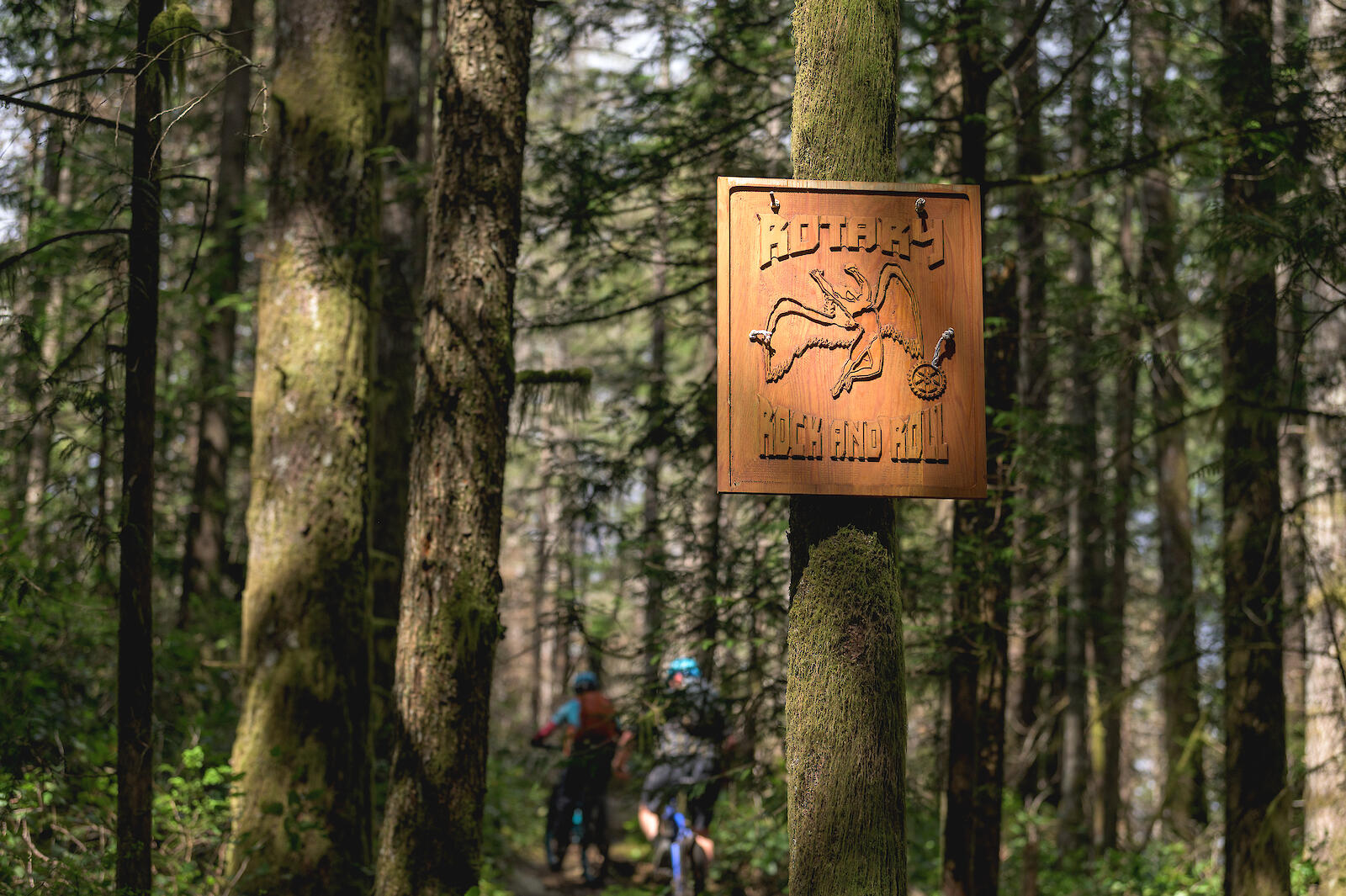
To finish our ride Yells leads us up a short climb to a newer trail that together captures the spirit of the renovations. Renovations to the climb added switchbacks and a smoother surface to make it more relaxing and durable. The descent, the blue Rotary Rock and Roll, tumbles off a small summit, splits two massive boulders and swings through swooping corners, with small jumps and banks. It feels like a roller coaster.
I come flying out the bottom with a buzz that only comes from a trail purposefully built for mountain biking. Pedalling for home, on another rail grade, a deep thought comes to mind: Campbell River’s connection to logging isn’t going anywhere, but now it’s also a mountain biking town.
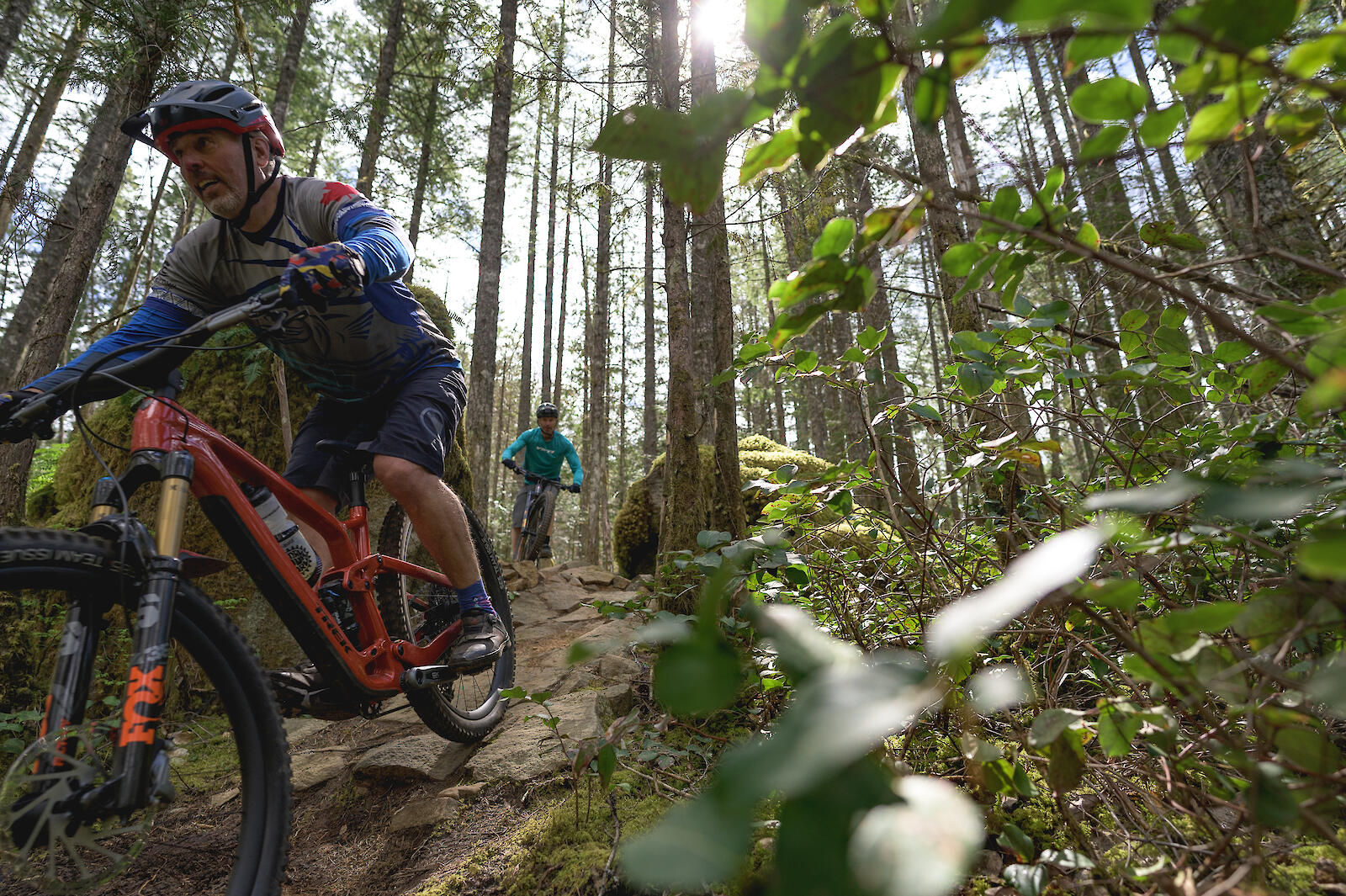
Campbell River Ride Guide
Getting there: Campbell River is 1.5 hours north of Nanaimo and 3.5 hours north of Victoria.
Coffee: Hit the Java Shack and then swing by Freya’s for the best croissants on this side of the Atlantic.
Post ride bevy: Get a feel for the marine side of Campbell River at the Rip Tide Marine Pub, right on the water. For local beer try Beach Fire Brewing Company, conveniently located on the trail-side of town.
Swimming hole: Swim with the fishes in the Campbell River near the logging road bridge or at a sandy beach at McIvor Lake.
Accommodation: https://campbellriver.travel/stay/
Guiding: Island Mountain Rides
Find out more: https://campbellriver.travel
Trailforks Link: https://www.trailforks.com/region/snowden-demonstration-forest
Where else to ride: For a shorter, more gravity focused ride check out Quinsam River Trails or Radar Hill. The trails on Quadra Island, a 15 minute ferry ride from Campbell River, are also excellent.
Campbell River is nestled within the unceded territory of the Liǧʷiłdax̌ʷ Peoples: the We Wai Kai, Wei Wai Kum and Kwiakah Nations.
